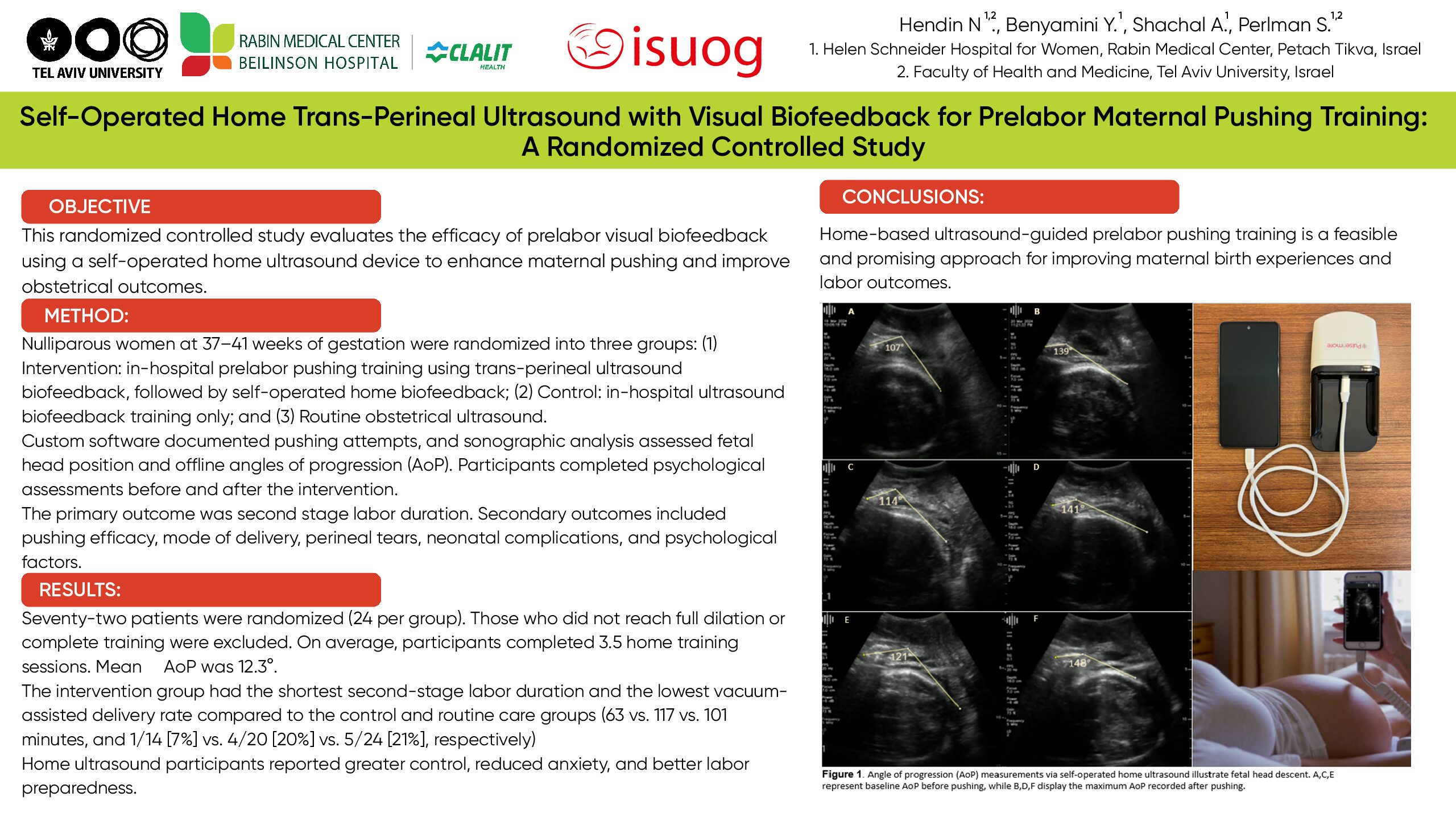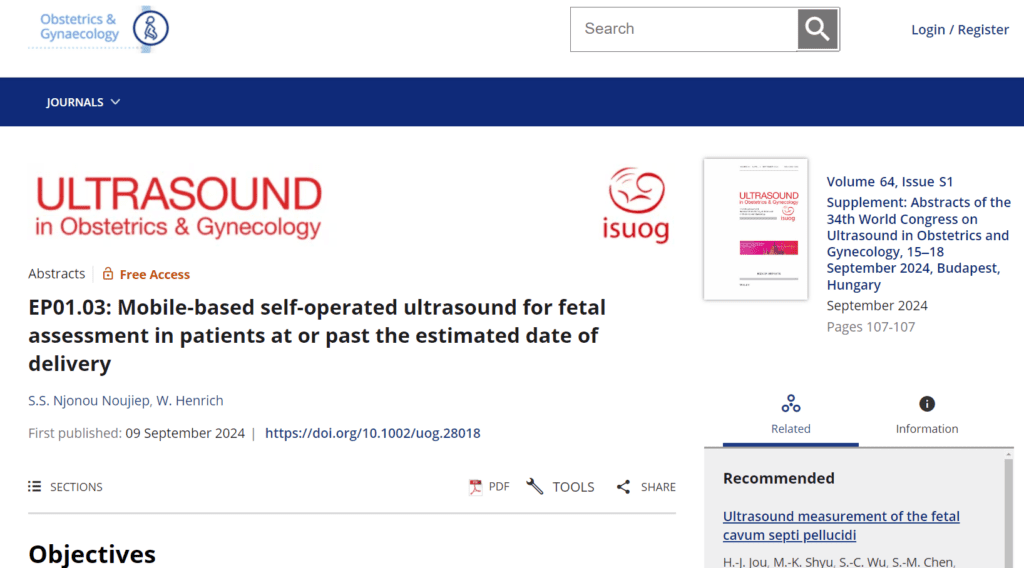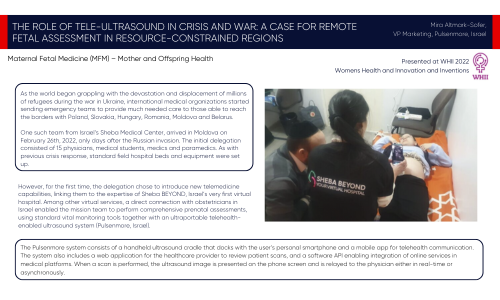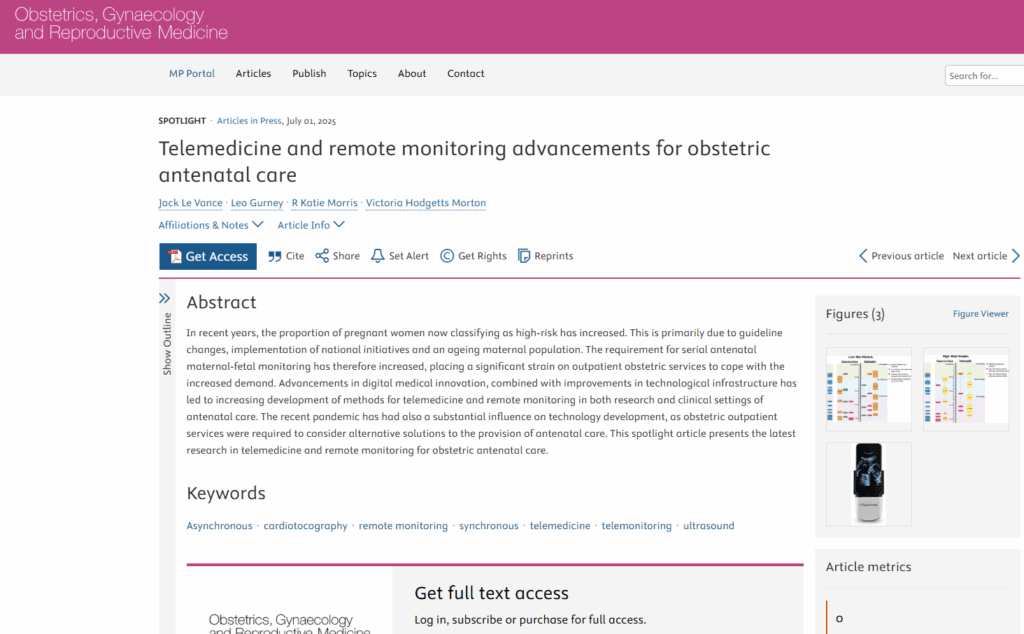Yes, the device is reliable and was tested, validated and approved for use in the US, Europe, Australia, Brazil, Switzerland, the UK, Colombia and Israel. Over 200,000 successful scans have been performed since the launch of the technology. These numbers demonstrate that women can confidently scan themselves, as the diagnoisis it self is being done by a trained clinical team. The remote clinical team can accurately identify parameters related to fetal vitality, such as fetal heartbeat, fetal movements, and amniotic fluid volume, based on these scans.
Home » Archives for October 2025
Resource Center
Explore our comprehensive library of clinical publications, abstracts, news, events, newsletters, marketing materials and press releases.
Discover how Pulsenmore is shaping the future of healthcare delivery
Filter By:

- Ongoing research
This randomized controlled study evaluates the efficacy of prelabor visual biofeedback using a self-operated home ultrasound device to enhance maternal pushing and improve obstetrical outcomes.
- Ongoing research
Conclusion: The Pulsenmore platform offers a safe, effective, and patient-centered solution for prenatal monitoring. Clinical evidence from three years of research and successful commercialization supports its integration into prenatal care.
- Ongoing research
Home ultrasound and CTG are potentially feasible and acceptable to high-risk pregnant women. Larger studies are required to refine how best to implement such devices within clinical practice. To our
- Ongoing research
The INSTINCT ultrasound system is a viable solution for remote fetal assessment and could potentially lead to a cost and time alleviation. There is need for integration of Doppler-mode to
- Ongoing research
The study discussed the use of tele-ultrasound for fetal assessment in regions affected by crisis and conflict. It highlighted how remote ultrasound technology could provide crucial prenatal care in resource-limited
- Publications
This systematic review examined the potential role of tele-ultrasound, handheld, and self-operated ultrasound devices in prenatal care. It assessed how this technology could have enhanced accessibility, accuracy, and convenience for

the news pulse
We invite you to keep up to date with the latest updates by registering to our quarterly newsletter
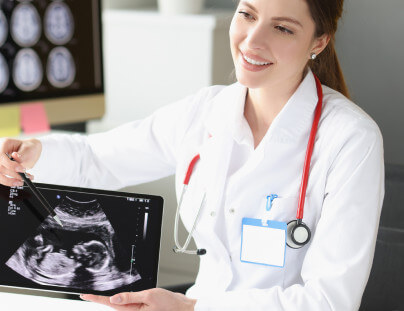

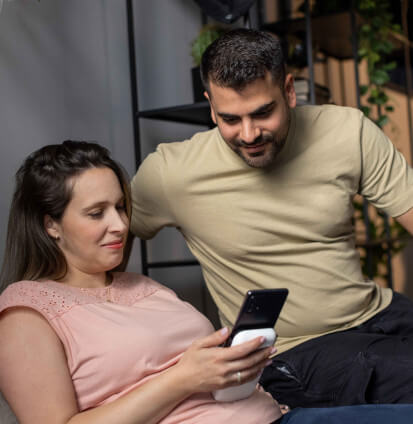


FAQ
Frequently asked question
Is the device reliable? How can I scan myself if I’m not a professional sonographer or obstetrician?
How do I know if my smartphone is supported?
The Pulsenmore solution utilizes your smartphone’s processing and video streaming capabilities, communication protocols, display, and power resources. For this reason, not all smartphones meet the compatibility requirements. To insure your smartphone is compatible with the Pulsenmore Home Ultrasound check the Specification webpage.
Why is the device single-paitent use?
Our commitment to patient safety and reliable scans guides the device’s design and functionality. The Pulsenmore device, connecting to a patient’s personal smartphone, optimally utilizes smartphone capabilities, minimizing material and resource consumption for enhanced environmental sustainability.
1. The Pulsenmore self-scan device is designed for use within a specific timeframe and usage limit. Extending its lifetime may compromise reading integrity due to material limitations.
2. Responsibility for device maintenance and home storage after the initial period cannot be assumed, impacting transducer quality and ultrasound scan reliability.
3. The device design and validated cleaning protocol do not allow transfer between patients, to avoid cross contamination and infection.
Can the product be used in a pregnancy with multiple fetuses?
No, the product is subject to use in single pregnancies only.
Can the device increase anxiety or create dependency?
The home ultrasound device is designed to provide continuity during pregnancy care and is intended to give you peace of mind.
Can I scan without medical interpretation?
Every scan requires medical interpretation, and it’s important to wait until the files are fully uploaded. You are not expected to understand or interpret the ultrasound scans; just follow the app’s instructions to scan, and receive a response from skilled ultrasound professionals .
What data does Pulsenmore collect?
Pulsenmore collects four types of data:
• Service logs: Application usage logs, such as performance logs and errors.
• Technical information about the smartphone: Smartphone capabilities, application version, language, etc.
• Clinical information: Ultrasound clips scan time
• Interpreter Data: The identifiers of the clinicians that interpret the scans.me, scan measurements and last menstrual period (LMP).
Is it safe to use Pulsenmore?
The Pulsenmore was designed to follow ALARA principles as follows:
The system supports only low frequency (2-5MHz), the duration of the scan is limited up to 3 minutes in the App guided mode, or at the clinician’s discretion in the clinician guided mode, only clinician can modify the ultrasound parameters (i.e., depth, gain, frequency etc.), each scan is enabled only upon the approval of a medical professional.
Is the number of scans women can do limited?
The health care provider determines the maximum amount of scans that can be performed by the user. The device is limited to up to 50 scans per pregnancy.
Does Pulsenmore use the data for its own purposes?
Pulsenmore utilizes service logs and technical information to improve services and enhance user experience. Pseudonymized clinical data (also referred as de-identified data in the US) is used for clinical education, training, research and development purposes only.
Is the device transferable between patients?
The device is designed for a single patient use, to prevent cross contamination.
How does the patient receive her Pulsenmore Scan Key Code?
The Pulsenmore Scan Key Code is generated by the HCP or admin within the clinician dashboard interface. It has unique identifiers based on the patient de-identified ID, selected mode (Clinician-Guided or App-Guided), and prescription details (frequency and time of use).The key is automatically transformed into a QR code and shared with the patient via email or SMS.

